What awaits Ukraine when the fighting stops?
From Arras to Mostar, war has left its footprints all over Europe. Some cities rise from the ashes but Mary Dejevsky fears the legacy for Ukraine will be an intense hatred for the bully next door – a hatred that will destabilise the whole region for years to come

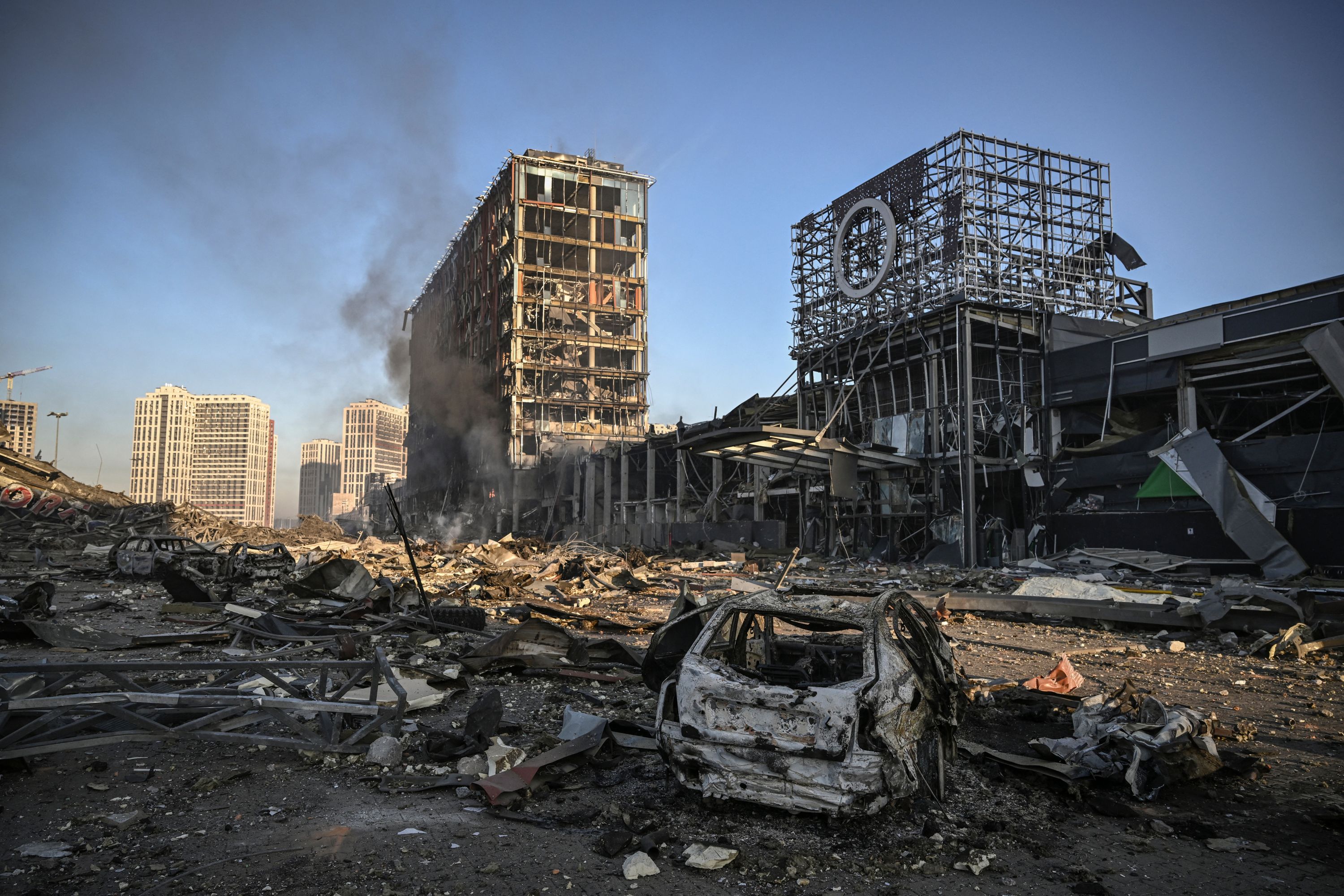
As the latest – perhaps the last – evacuees from the ruins of Mariupol cross into the relative safety of Ukrainian-held Zaporizhia, there is distress, relief and resilience in almost equal measure. Some of the new arrivals have the energy to raise their arms in triumph and shout Slava Ukraini (Glory to Ukraine). Most are quiet. A few, overcome with emotion, speak in the barest detail of the hell they have left behind.
They told of weeks spent in darkness in the maze of bunkers underneath the vast Azovstal steelworks, of the mortal risks of venturing above ground even for a few minutes towards the light and the air. And they told of friends and family members gone forever, their lives – long or short – cut off seemingly at random. And when you heard these spare and matter-of-fact accounts, you could only marvel at the speakers’ calm acceptance of what had happened, and the sense of something like gratitude for just being alive.
The worst, probably, they didn’t tell and maybe never will. Among the more extraordinary features of war is the way, once the horrors are over, so many people seem able to pick up their lives and carry on, never mentioning what barbarism and deprivation they have been through.
That seems as true now as then. Most of those who survived the Nazi death camps never spoke of their experiences, and the same with one-time Japanese prisoners of war. Take the Britain of the 1950s and 1960s: how many parents ever vouchsafed to their children, what it had rally been like at Dunkirk or D-Day or when they were bombed out during the Blitz?
My husband’s parents – taken as forced labour from Ukraine to what is now the Czech Republic – passed on only the sketchiest memories of their trek across Europe as part of that great human tide moving westward as the Second World War drew to its close. For the victors, the realities of that war were soon largely sanitised by tales of heroism and the defeat of evil by good. Suffice it to say that, even in the safety of the United States, my father-in-law slept with an axe by his bed until his dying day.
The legacy of war is complex; it makes itself felt in different timescales and at many levels. And elements of that complexity will be left in Ukraine, once hostilities come to an end. In the meantime, pointers to what awaits may be found in the many other places that have undergone something of the sort of warfare Ukraine is experiencing today.
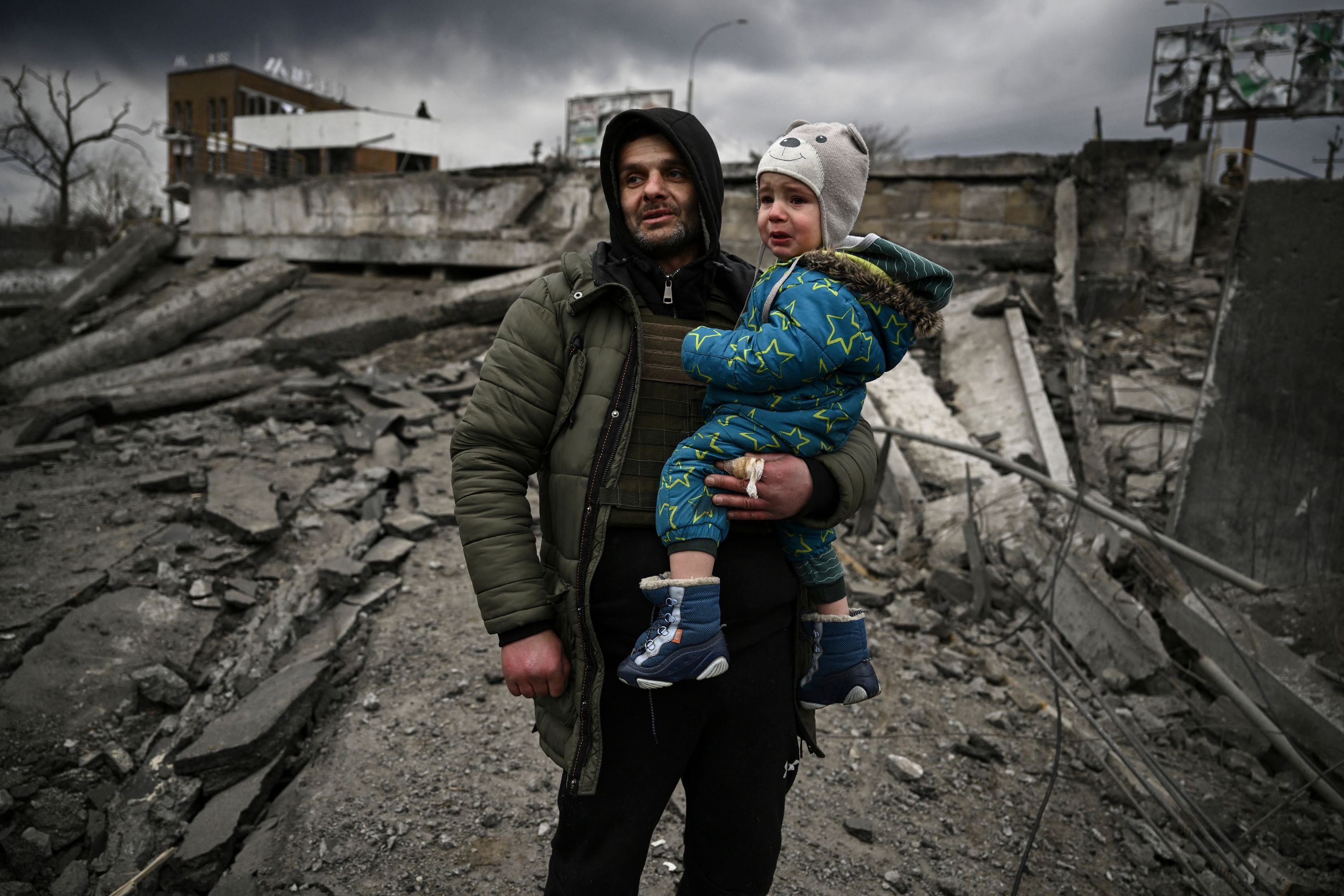
And the choice of precedents is wide, even if you restrict it geographically to Europe and Russia. You might start with Arnhem or Verdun in the west, and travel all the way to Stalingrad (now Volgograd) in the east, pausing on the way at some of the very same cities in Ukraine that are, or could yet be, in contention today. You might then add some of the cities ravaged by more recent conflicts, such as Sarajevo in what was Yugoslavia, while leaving aside other conflicts, such as Nagorno-Karabakh and Transnistria, that date from the Soviet Union’s collapse but remain unresolved.
As I say, the choice is wide – war, alas, has left its footprints all over Europe. But it so happened that recent travels took me to two cities whose 21st-century identity seems particularly defined by war and which exemplify well some of its lasting effects. The first is Arras in northern France; the second is Mostar in the now independent state of Bosnia-Herzegovina.
What happened next defines Arras today. With the war over, it set about rebuilding with a will, and not just rebuilding, but replicating so far as possible what had been destroyed
To be sure, the wars were quite different in their origin and time, but they came close to destroying both cities. And it may be relevant or not that, like so many places that have found themselves at the centre of fierce and protracted fighting, they are both cities straddling a river that has the potential to unite or divide. What they also have in common is that their reconstruction and survival to this day could soon find echoes in Ukraine.
It is more than a century now since the guns of the First World War fell silent, after the armistice – agreed just a couple of hours’ journey away from Arras in the forest of Compiegne – took effect at the 11th hour of the 11th day of the 11th month of 1918. And the Arras of today is a thriving market city with its historic churches and classic Flemish squares gloriously complete, seemingly untouched by armed conflict. But that might almost be the point.
The centre of Arras is as intact as it seems today, not in spite of the war, but – you could say – because of it. With the fighting over, an estimated two-thirds of the city lay in ruins. Its famed town hall and its belfry had been destroyed in the first months; the cathedral the following year. Between 1914, when the city was briefly captured by the Germans, until the decisive battles of 1917, Arras was only ever 10km away from the frontline.
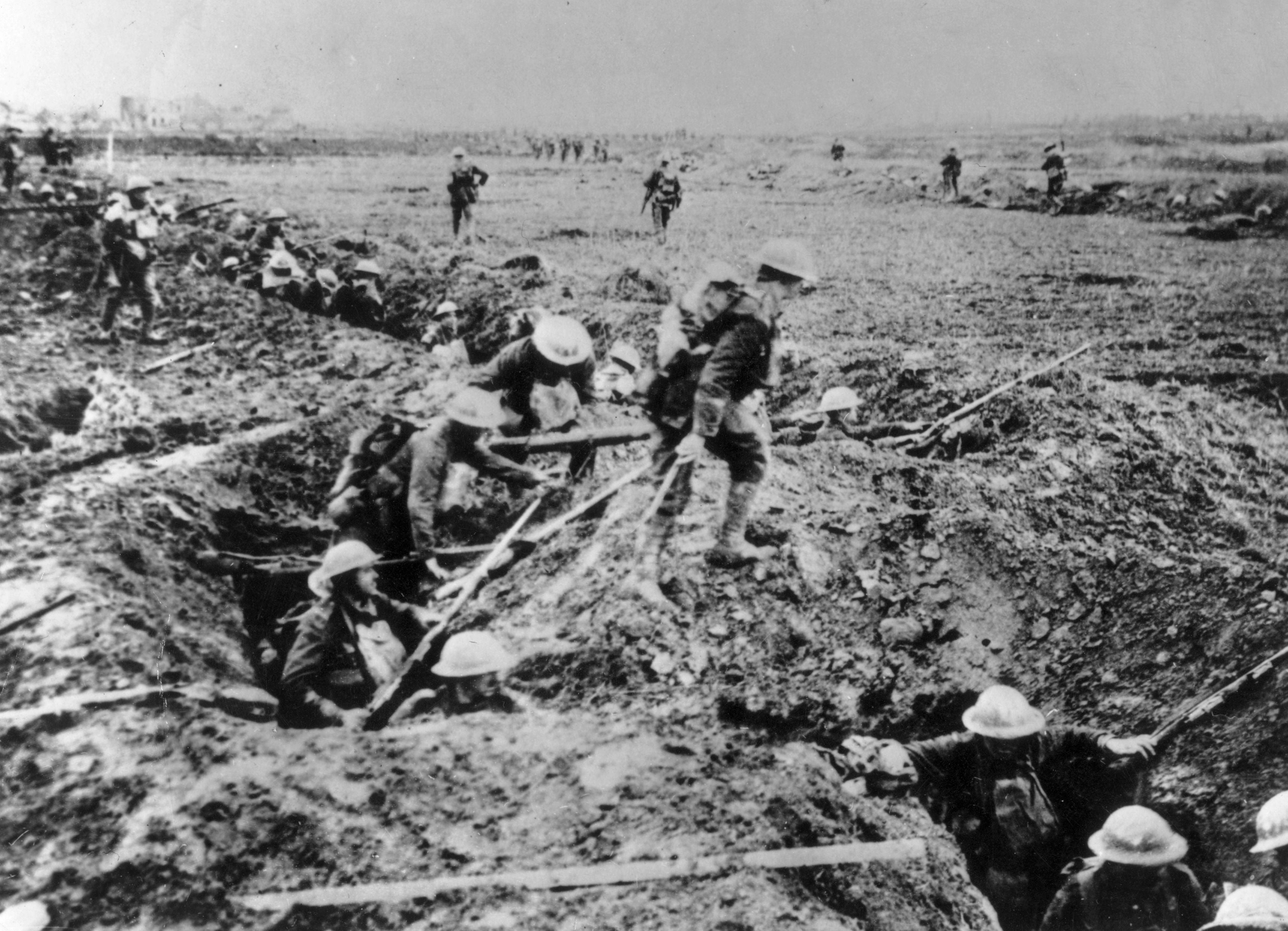
What is more, in a direct parallel with Mariupol, and the underground bunkers at the Azov steelworks there, it was the extensive (mediaeval) vaults and tunnels below Arras that helped save the city, allowing much of overground life to be transferred underground, and providing shelter for British troops to hold the city against German assaults through 1917.
But it is what happened next that defines Arras today. With the war over, it set about rebuilding with a will, and not just rebuilding, but replicating so far as possible what had been destroyed and improving the rest. The result was the resurrection of the old city in almost every detail on the outside, but enhanced on the inside with what were then state-of-the-art building techniques and amenities.
Arras seems to have been fortunate in its architects and its city fathers – who are now commemorated on the plaques to be found all over the centre – and the square known before as the Small Square was renamed Heroes’ Square in tribute to the British troops credited with the city’s successful defence. A characteristically immaculate Commonwealth War Cemetery beside the ringroad, contains more than 2,500 graves.
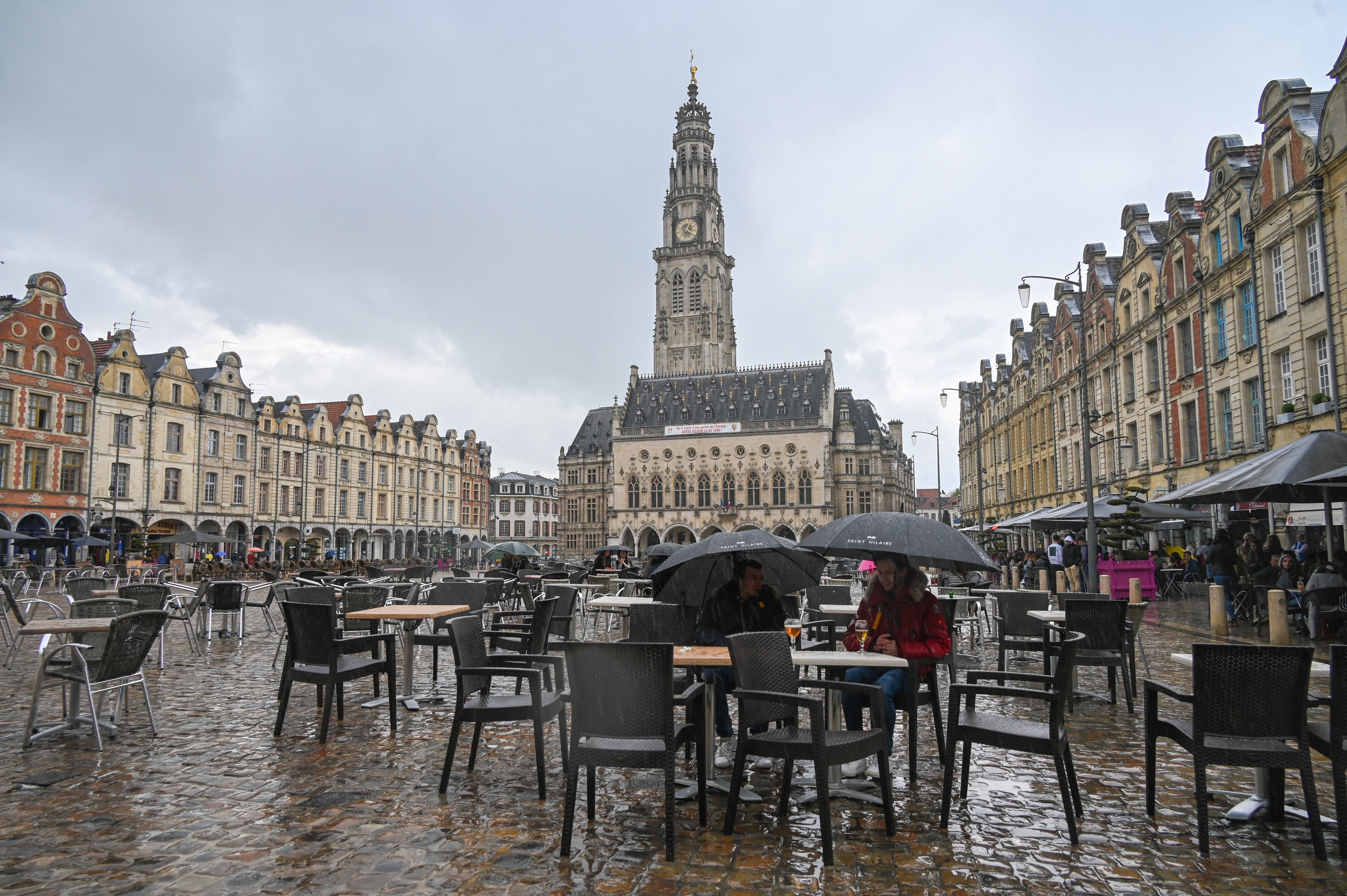
It is a cruel irony that the rebuilding of Arras was completed in 1938 – a year before war came once again to Flanders and two years before Arras came under German occupation. Today, though, it is the Great War that defines Arras and, more than a century after its near-annihilation, the city has largely sublimated its suffering through a wealth of civic and national myths.
Which is maybe why, walking around Arras, I saw it as a credible template for some, if not all, Ukraine’s damaged and destroyed cities, offering the realistic hope that they could be revived just as speedily and completely as Arras was then. In fact, Ukraine’s capital, Kyiv, already has its Independence Square, commemorating the ‘Heavenly Hundred’, who fell in still not completely explained circumstances during the protests of 2014. From February 2022 and as long as the war lasts, there will be martyrs aplenty to be memorialised in towns and cities across Ukraine.
Nor can it be doubted that Ukrainians will be as intent as the people of Arras on restoring the historic architecture they have lost. Even as the first Russian missiles hit the outskirts of Kharkiv, I remember one young volunteer telling the BBC – without a trace of sentimentality – that the war could offer an excellent opportunity to replace ugly Soviet–era blocks with something more aesthetically pleasing and more appropriate to Ukraine. Many of her compatriots would doubtless say Amen to that.
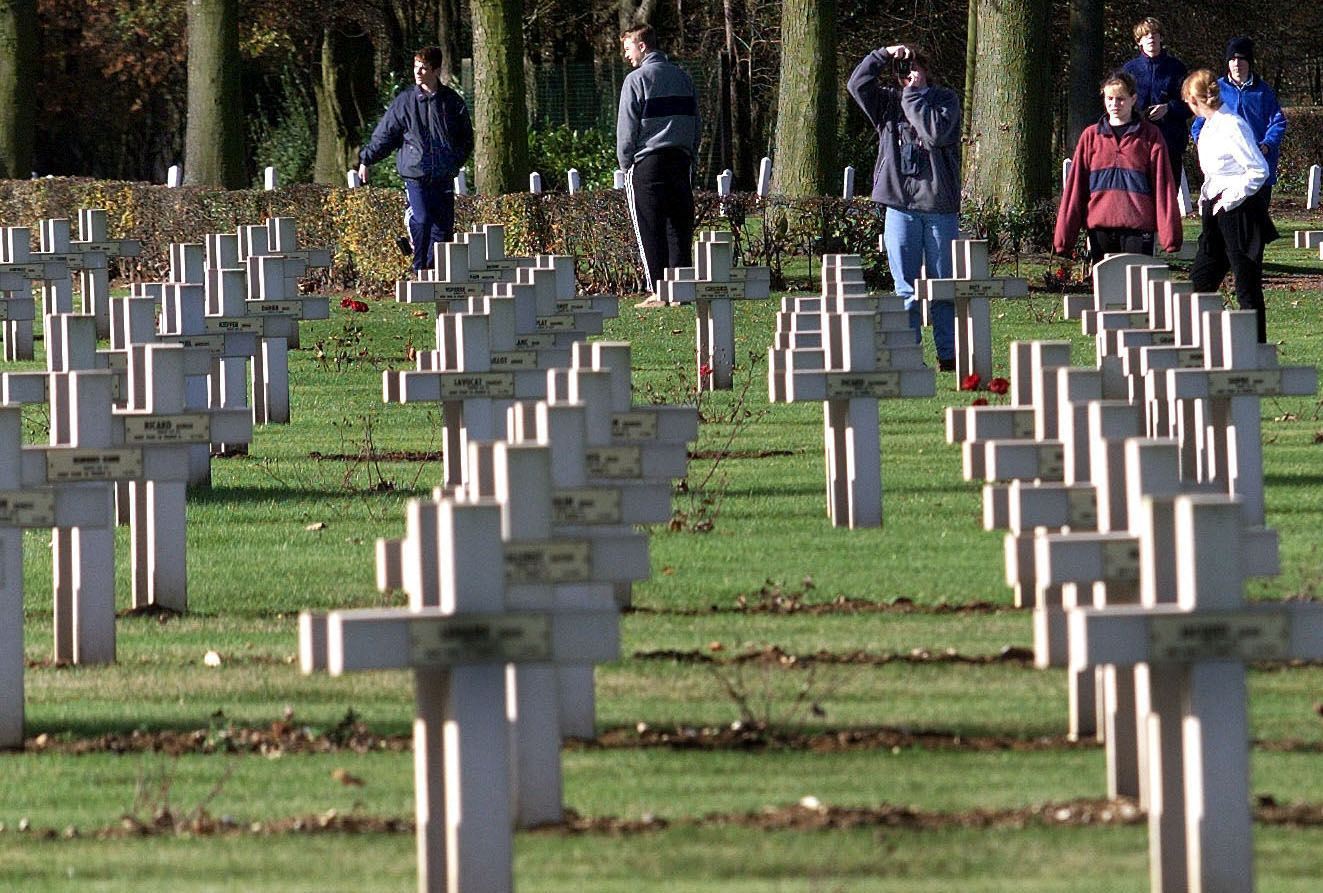
The cost could, of course, be a stumbling block – as indeed it was in Arras – given the scale of the destruction in Ukraine and the urgent need for new homes. But in many ways Arras a century on might offer some cheer for Ukraine and particular hope for a devastated city such as Mariupol. War destroys, but it can also provide a stimulus for rebuilding – and, entrusted to the right hands, for a better future rooted in a contented past.
But a century – even half a century, which is how long it took for Arras really to emerge from its wartime chrysalis – is a long time for war-weary Ukrainians, or anyone, to wait. Even if you take the physical rebuilding alone, that took 20 years – a generation. And now, even with modern construction methods, it is hard to see a city destroyed to the extent of Mariupol being completed in much less time.
The legacy of war in Mostar may offer still fewer consolations, and some warnings, for post-war Ukraine. It is only 27 years since the signing of the Dayton Accords that set a framework for ending the Bosnian War – which erupted as a consequence of the post-Cold War disintegration of Yugoslavia and Serbia’s territorial ambitions. The war here is well within living memory, at least for anyone over 40. It also remains to an extent a glowering presence.
The city enjoys a dramatic setting, in a steep rocky ravine by the deep turquoise Neretva River, and its 16th-century bridge, which gives the city its name, is a landmark familiar the world over. Its destruction, on 9 November 1993, at the hands of Croatian forces thus became a symbol of the divisions of war, just as the rebuilding of the bridge, conforming as far as possible to the original design, and the first crossing in July 2004, were hailed as symbols of peace and reconciliation.
Mostar has three museums about itself, each offering a different perspective. You cannot walk around the old centre without passing several small graveyards, each with their fresh white stones
As in many places, however, including it has to be said Northern Ireland, peace does not necessarily bring reconciliation, and so it is in Mostar. More than four–fifths of the city was damaged or destroyed between 1992 and 1996 – a greater proportion even than in Sarajevo, which endured almost four years blockaded by Serbian forces in a siege that commanded headlines around the world. Today, the old city of Mostar, with its cobbled streets and its stone roofs, has been almost entirely restored – as meticulously as Arras in its day – thanks in this case largely to the financing and oversight of Unesco.
You do not have to stray far, however, to find gutted and damaged buildings and tumble-down streets. Housing blocks are battered and daubed with political graffiti, in the same language, but the different script, of Serbs and Croats. And everyone knows where the front line ran during the war (and it wasn’t down the river, but a couple of blocks away), and everyone knows that the city is now effectively segregated along that old frontline and there is only one school that is mixed, as between (mainly Catholic) Croats and (mainly Muslim) Bosniaks, and the few (mainly Orthodox) Serbs who remain. An open three-way armed conflict has become a closet two-way conflict between Croats and Bosniaks, which may or may not resolve itself in time. You may hear church bells and calls from the mosque combining at certain times of day. But any sense of harmony is deceptive.
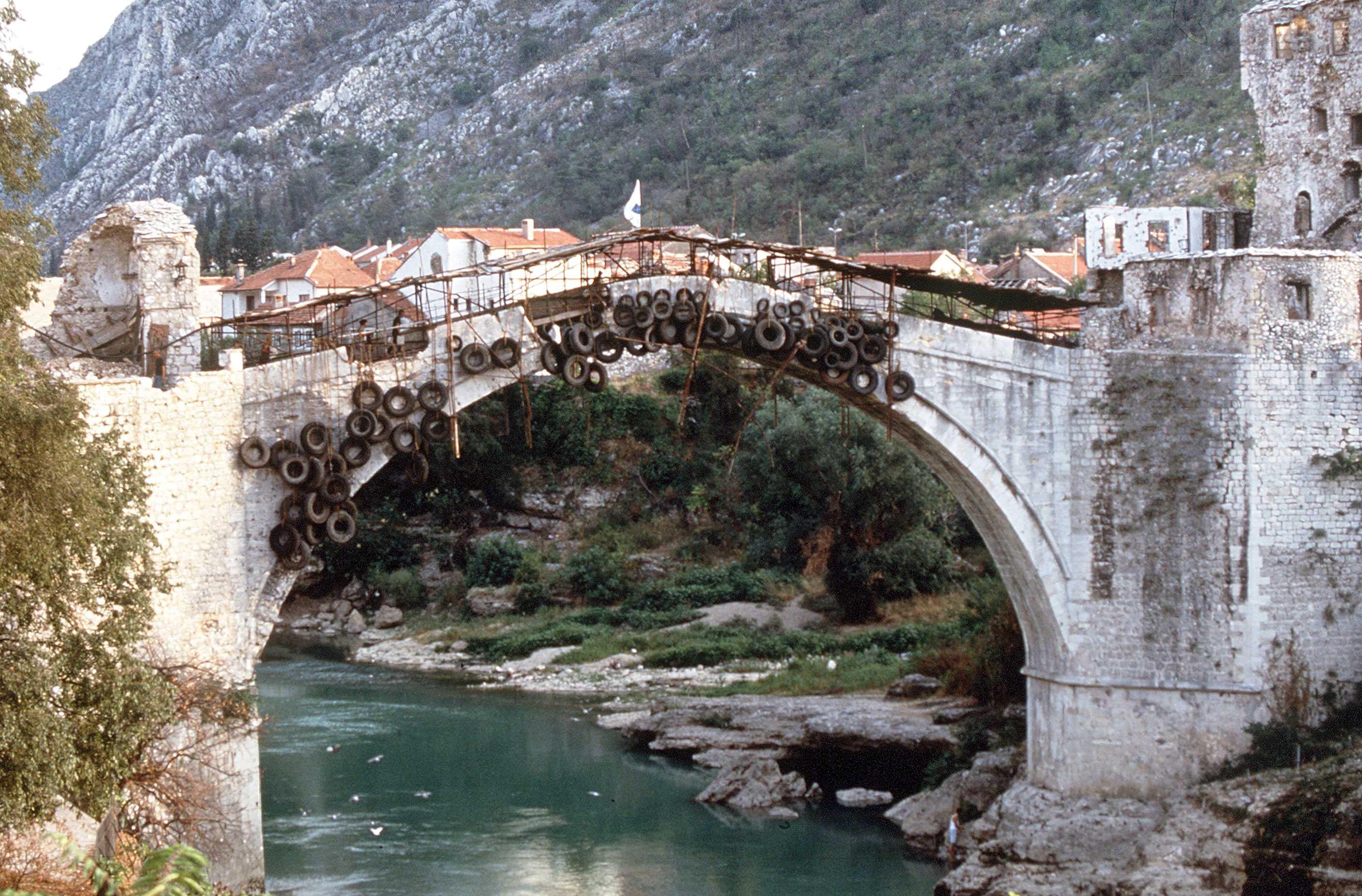
Whether the uneasy peace continues could well depend in part on the city’s economic fortunes. Tourism had come to dominate the economy after the war and seemed to be on a promising trajectory when the pandemic hit. The visitors are only just starting to return. Among residents, as many as four in 10 are unemployed; wages are pitiful, and as many as can contrive to acquire an EU passport to facilitate escape. Poverty is one thing: evidence that any recovery from the war is far from complete. Equally telling, however, is where the money – and attention – that does exist is spent.
And where it goes, at a superficial, visible level, at least, is on memory: museums and memorials, and graveyards. Mostar has three museums about itself, each offering a different perspective. You cannot walk around the old centre without passing several small graveyards, each with their fresh white stones, occasional sprays of flowers, and a cluster of visitors seeking out names. Family or friends, perhaps, or former comrades in arms.
Then, when you stoop to read the inscriptions, what is even more striking than the ethnic and religious mix – some names clearly Christian and Croat or Serb, others clearly Muslim and Bosnia – is the proportion who died in their teens, twenties and thirties between 1993 and 1995. It is hard to imagine now but the centre of this city was a war zone and these spaces were emergency burial grounds.
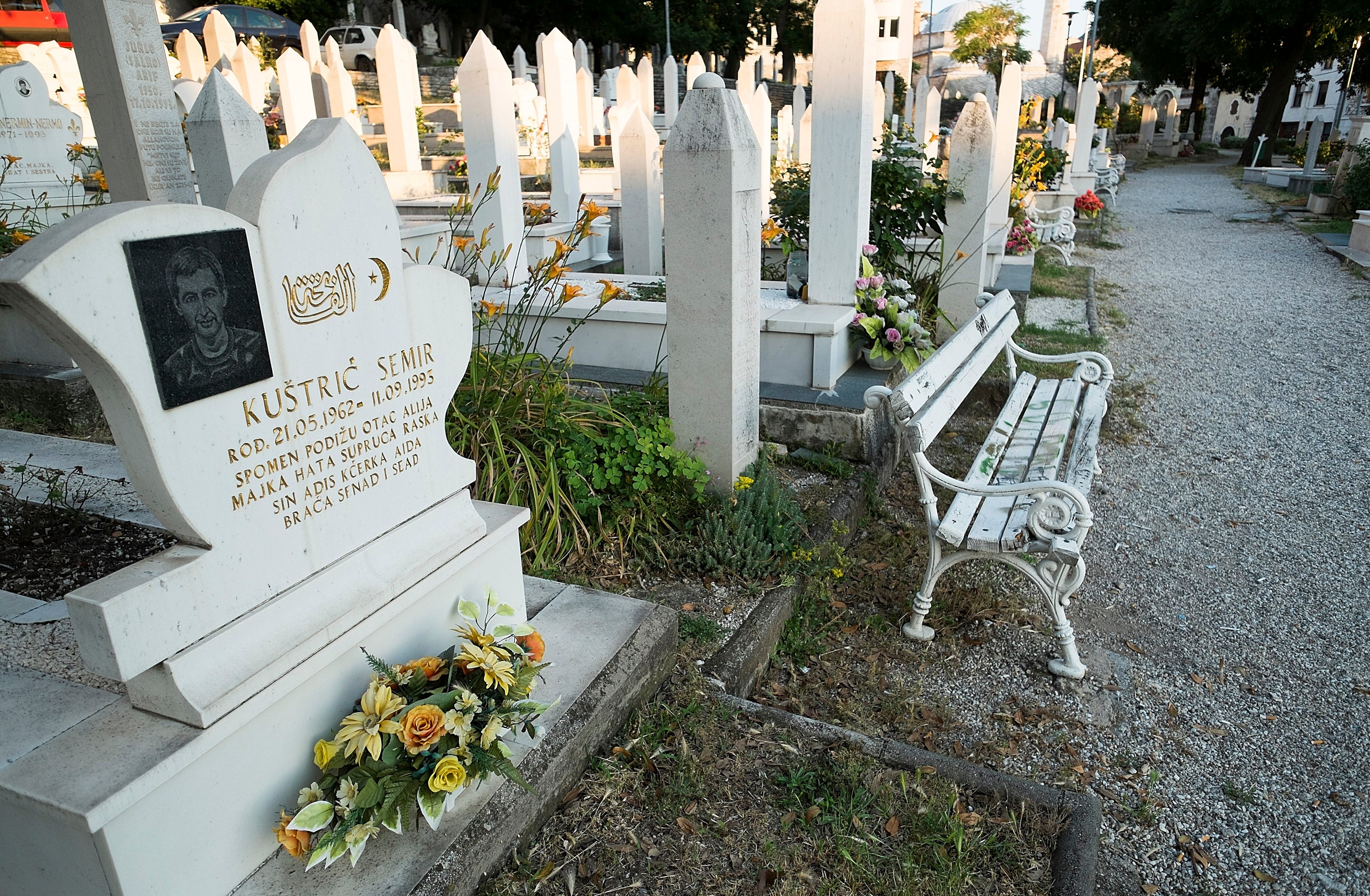
The conflict in Ukraine might appear quite different from the Bosnian War, given that it began with an old-fashioned invasion by one country of another, and one of the legacies already evident is a greatly enhanced sense of national solidarity and nationhood, supported by a whole new set of inspirational memories and new local and national myths. In the same spirit, the new heroes will surely be remembered in the names of streets, squares and buildings. If the Bosnian War has arguably left this part of the Balkans almost as divided as it was, Ukraine stands to end the war with Russia more united than it has ever been.
There are nonetheless two legacies that Mostar and Ukraine’s current war zones might share. The first is the economic damage. A recent World Bank projection suggests that Ukraine’s economy could shrink by a drastic 4-plus per cent this year as a result of the war. Against that, once the war ends, Ukraine should find recovery easier. This is partly because of the generous international support that is likely to be forthcoming, up to and including something akin to a Marshall Plan, funded by the US, Canada and the EU. But partly it is because the staples of Ukraine’s economy are agriculture and mineral resources, sectors that could revive relatively quickly once hostilities cease.
One day the war in Ukraine will end. But it will not truly be over; Ukraine will be changed. War does more damage than the obvious sum of deaths, injuries and material destruction
The picture is not all rosy, however. The extent of the war damage, especially to infrastructure, such as transport and power generation, could be enormous in itself and hinder recovery in other areas. There is also the question of manpower: how many of those who have left the country will return and how many of those will be younger, better-educated people, who will be needed for Ukraine’s recovery.
The second legacy of war that Ukraine and Bosnia might share has to do with community relations. While the Russian invasion has undoubtedly supercharged Ukraine’s sense of itself and intensified patriotic allegiance – something that could help Ukrainians to tolerate the likely postwar austerity, two other trends could work in the opposite direction. One is the likelihood of reprisals against those who are suspected of harbouring pro–Russian sympathies or of collaborating in areas that Russia has occupied. There is some evidence that this has already been happening.
The other is the reverse-side of the group solidarity that is forged in siege conditions. I heard near-identical accounts of how willingly essentials such as food and phone chargers were shared in the underground refuges of Mariupol and Kharkiv and from memories of wartime Mostar. But the greater the sense of group solidarity, the more intense the hatred of the enemy. In Mostar that hatred is directed mostly at the absent Serbs, but remains also between Croats and Bosniaks. In Ukraine it is directed against Russians.
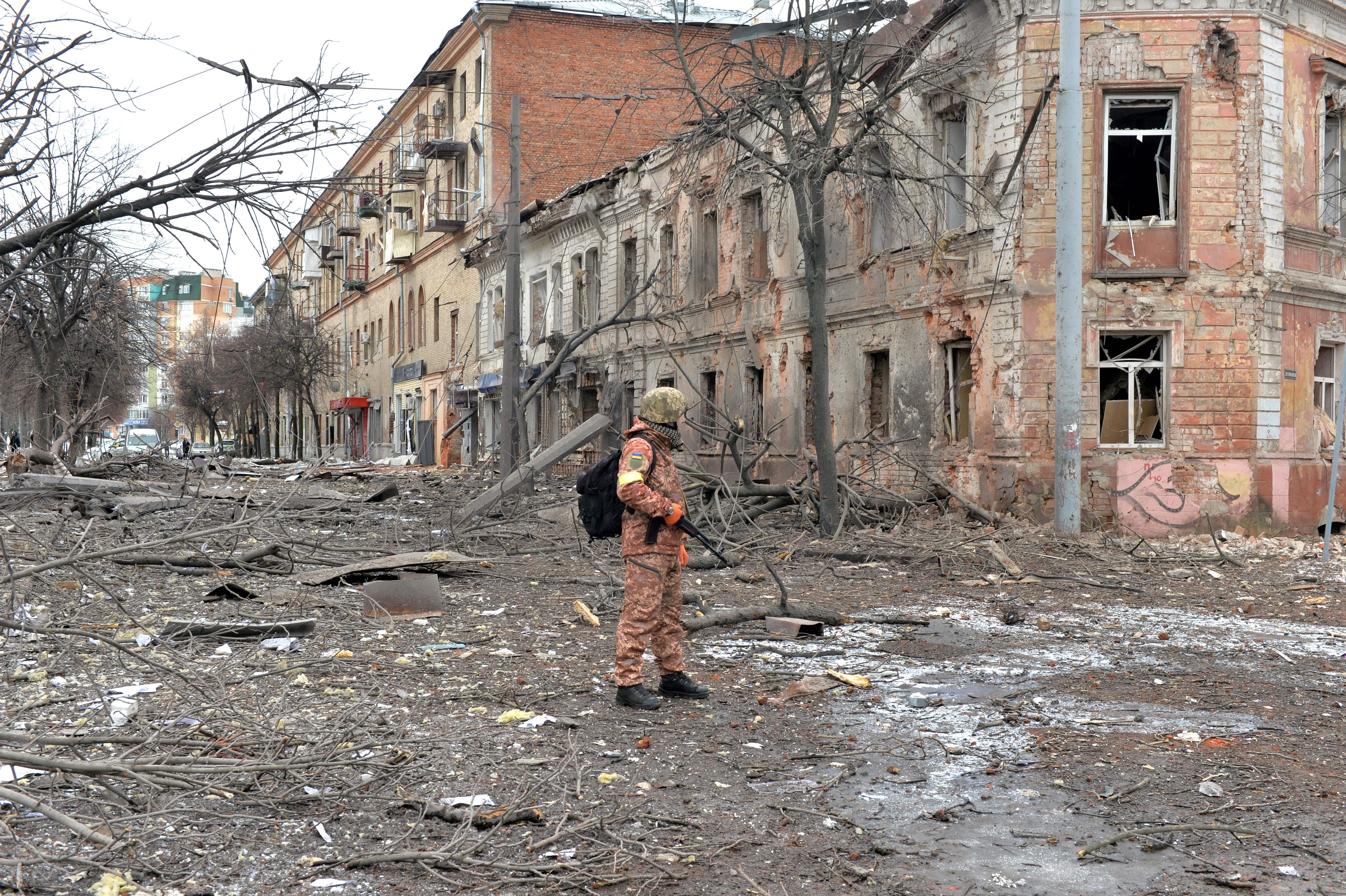
Of course, hatred of Russians is entirely understandable in the current circumstances of war. But aid workers report hearing even young children expressing their desire to take revenge on Russians, suggesting that aversion to Russia and Russians will be ingrained for at least one generation and probably more, with wider implications for personal and political relations.
The establishment of what became the Common Market was one way of fostering anti-German sentiment in the aftermath of the Second World War, and what is now the EU is still regarded by many of its original members as a – largely successful – peace project, quite as much as an economic, and now political, project. Whether it is the EU effect, or the passage of 50 or 100 years, it is unusual to hear anyone openly expressing anti-German sentiment – and that was certainly true when I visited Arras, where German visitors abounded.
With Ukraine and Russia pulling in opposite directions politically and the experience of war bound to be so raw, it is hard to envisage anything like this sort of peace project even being proposed, let alone taking root, between Ukraine and Russia for the foreseeable future, at least without regime change in Russia.

Finally, there is the psychological aspect, the trauma that is left by the experience of war. This is not just about symptoms that would be classified now as PTSD – and there is certainly more awareness today of this sort of damage – but of how people behave when the war is over. Solidarity may have reigned in the cellars of Mostar, as it now reigns in the underground stations of Kharkiv and the bunkers of the Azov steelworks. But how long will such consideration endure?
What I have seen in Mostar, but also in other places where conflict has not long gone, suggests that war – perhaps because personal survival becomes the imperative – can change behaviour for the worse. It can leave in its wake a pervasive suspicion of strangers, as well as a lack of social trust, and a highly transactional approach to almost everything. You may also note a hard edge where courtesy might once have been.
One day the war in Ukraine will end. But it will not truly be over; Ukraine will be changed. War does more damage in more different ways than the obvious sum of deaths, injuries and material destruction. And it leaves more scars, for longer than may be realised by those fortunate enough to have passed their lives in peace. But the effects are more variegated, too.
The fallout from war is a fertile area of academic and scientific study, and what I have set out is no more than a collection of observations, based on what I have seen elsewhere, that might hint at what awaits Ukraine. The pluses might include a revitalised sense of civic responsibility, a stronger sense of belonging to one Ukrainian nation, and a fierce sense of common purpose reflecting a wish to make up for lost time. People may also be more prepared than they were to make sacrifices for a better future, as exemplified in more than material things.
Against that, however, must be set not just the economic damage to a country that was already poor by European standards, but the profound psychological effects of war on social relations and on behaviour in a country where so many are now used to carrying a gun and settling scores by force. The biggest change, however, could be the intense hatred – collective and individual – that has been generated for the clumsy and debilitated bully next door. That hatred could be enough to destabilise the whole region for years, increasing the risk many times over that this Russia-Ukraine war will not be the last.




Join our commenting forum
Join thought-provoking conversations, follow other Independent readers and see their replies
0Comments